
A question that I’m often asked is why we don’t raise honeybees at our farm. I thought I would write a post to answer that question.
Pollination is important for most flowering plants. In order for them to produce seeds, plants need to get the male gametes of the flower – the pollen – to the female gametes. 90 percent of flowering plants depend on animals to provide this service. Bats, birds, and insects are all part of plants’ pollination strategies.
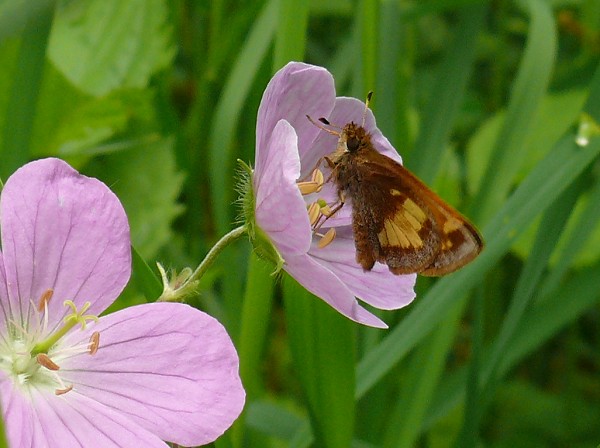
Hobomok Skipper Butterfly on Wild Geranium
Agricultural crops are very dependent on pollinators. 30 percent or more of crop plants are dependent on some kind of animal pollinator, and when food crops for animals are included, the percentage is closer to 60 percent.
Honeybees are non-native bees which, because of their habit of living together in large colonies, can be used effectively for pollinating agricultural crops. The hives can be managed by people, and moved around to places where crops need pollinating. Bumblebees are also used for pollinating crops – they also tend to live in groups, which makes them good candidates for being managed for agricultural use.
In the last few years, both honeybees and bumblebees have been having health problems – their numbers are decreasing, and people are beginning to realize that they need to have alternatives. There are many native pollinators, but their numbers have also been decreasing as more land is cleared for agriculture and development, and as more pesticides are used on agricultural crops and gardens.
There are several initiatives by the US Government and private groups to try to improve awareness of the role native pollinators can play in agriculture, and to try to learn more about them, and improve their habitat. The most recent farm bill is the first one that includes financial incentives for improving habitat for pollinators, and funding for research on native pollinators. In 2006 an organization called Native Pollinators in Agriculture was formed to explore how native pollinators could be used to supplement the services of managed pollinators like honeybees.
We have hundreds of native pollinators on our farm. Since we’re raising prairie, not agricultural crops, it makes sense for us to concentrate on providing habitat for these native pollinators. Here are examples of some of the pollinators that I see around the farm.
Butterflies

Giant Swallowtail on Field Thistle
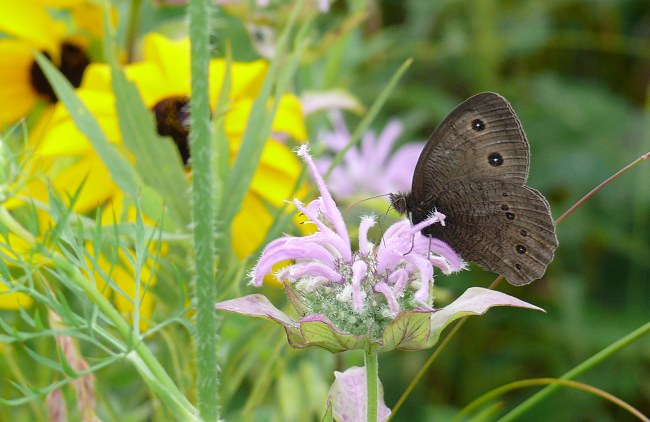
Common Wood Nymph on Monarda

Cabbage White Butterfly on Dandelion
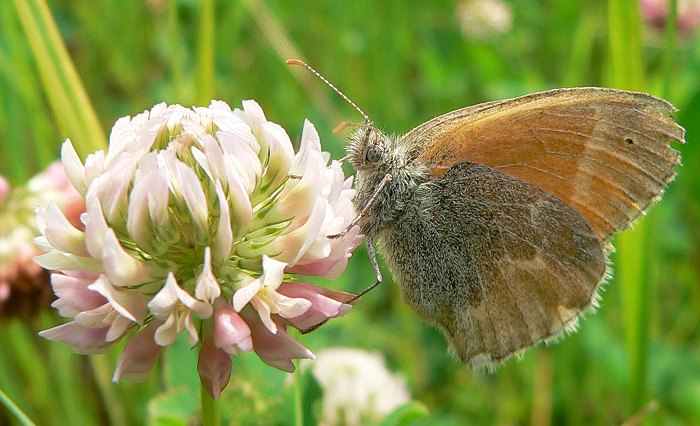
Common Ringlet on Clover
Moths

Hummingbird Moth on Thistle
Bees
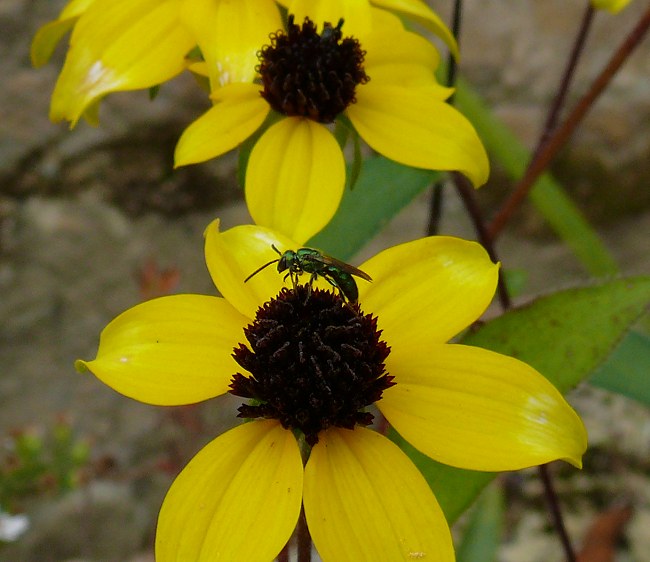
Sweat Bee on Brown-eyed Susan
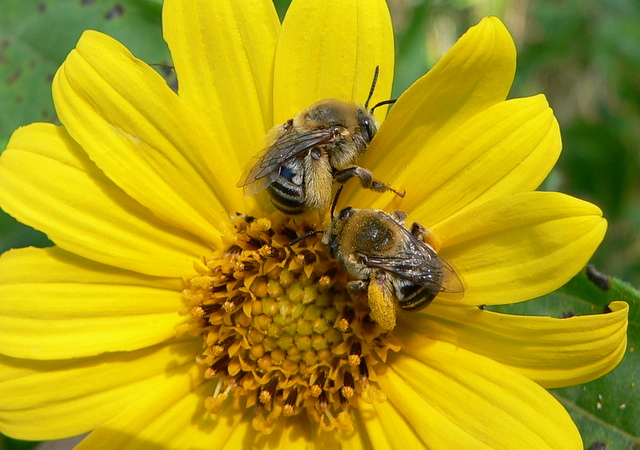
Bees on Oxeye
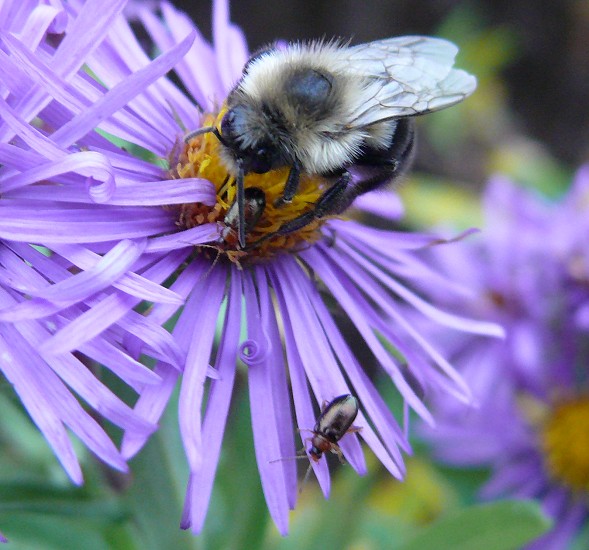
Bumblebee and beetle on New England Aster
Often there are several pollinators on one flower at the same time.

Bees and Fly on Pasqueflower
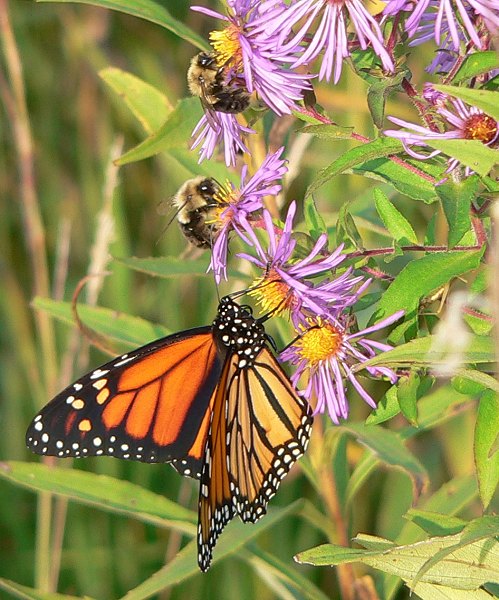
Monarch and bees on New England Aster
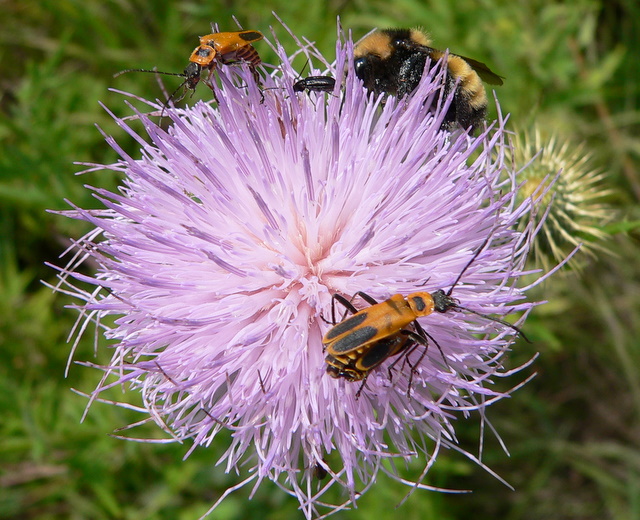
Bumblebee, Soldier Beetles, and unknown beetle on Field Thistle
Flies
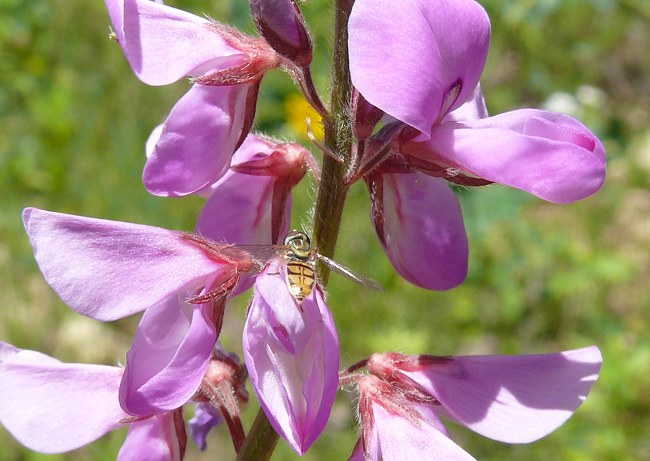
Syrphid Fly with Tickseed Trefoil
Birds
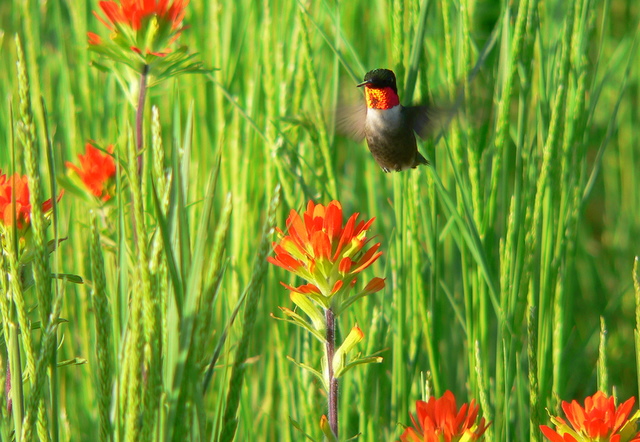
Ruby-throated Hummingbird with Indian Paintbrush
Further reading about the importance of native pollinators – an insects in general.
Fruitlesss Fall by Rowan Jacobsen (the last few chapters are about native pollinators)
Bringing Nature Home by Doug Tallamy
